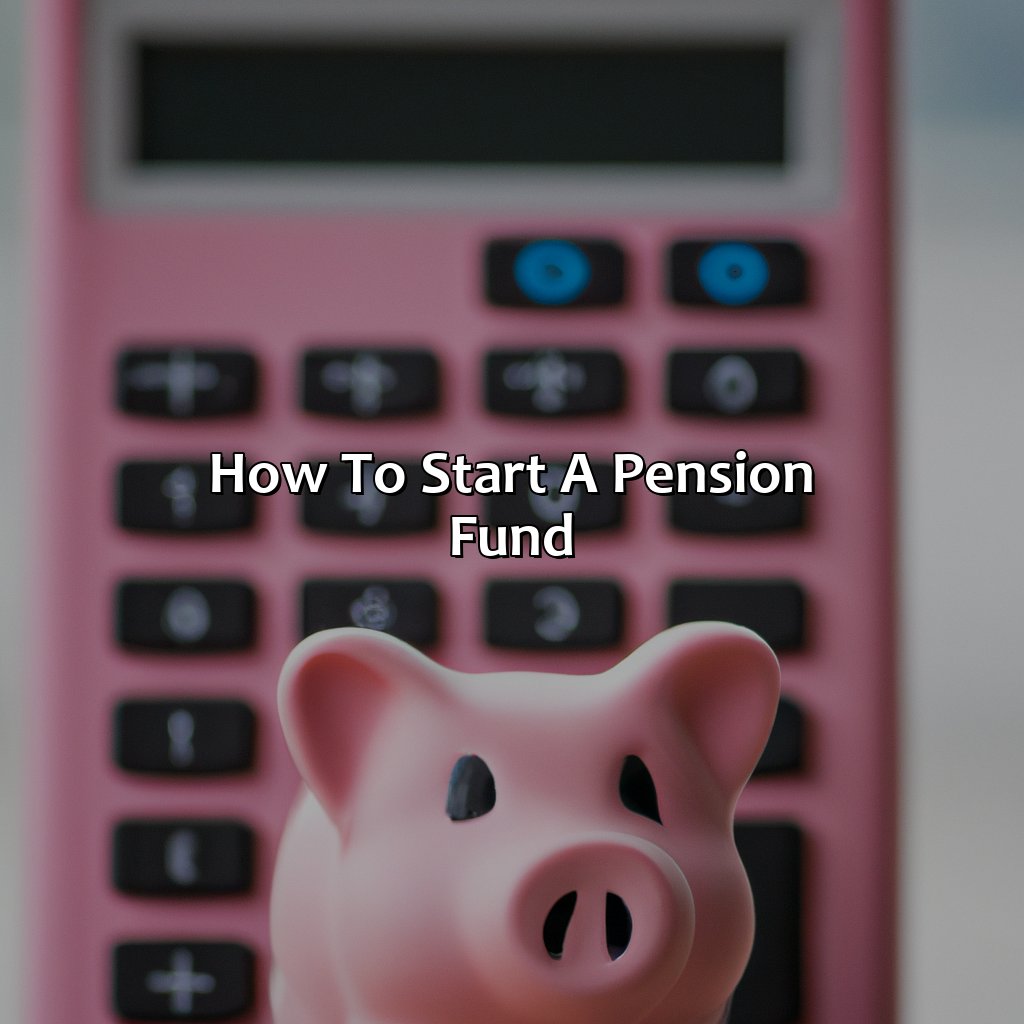How To Start A Pension Fund?
Key Takeaway:
- Starting a pension fund requires a clear understanding of its importance and the legal and funding requirements. It is essential to begin by identifying the need for a pension fund and setting realistic goals for the plan.
- The process of creating a pension fund involves choosing the type of plan, designing it, and registering it with the relevant authorities. Funding requirements must also be met, which may involve contributions from both employers and employees.
- Managing and administering the pension plan requires hiring professionals and ensuring compliance with legal regulations. Annual reporting and disclosure are also necessary to remain in good standing and maintain transparency.
Are you keen on securing your financial future but don’t know where to start? Retirement planning can be daunting and confusing, but starting a pension fund is one of the best ways to ensure financial security. You can take control of your future today to reach your retirement goals!
Understanding the Importance of a Pension Fund
Starting a Strong Pension Fund: A Professional Insight
Pension funds are crucial for individuals to ensure financial stability in their retirement years. Without a proper pension plan, one’s post-retirement life could be uncertain. Building a strong pension fund to secure your future financial stability is of paramount importance.
It is essential to understand that a corporate or personal pension fund is a long-term savings structure that enables individuals to save towards their retirement. The most effective way to start a pension fund is by identifying the correct pension scheme that meets your requirements. Pension schemes encourage individuals to invest in assets that generate long-term growth and income, typically affecting future retirement benefits. If you’re wondering who manages pension funds, there are often professional fund managers who oversee the investments and ensure they align with the goals of the fund.
It is advisable to choose a pension scheme that provides flexible investment options, as the nature of investments is affected by changing economic conditions. This will not only help you secure higher returns on your investments but also adjust your portfolio in line with relevant market changes.
Another key facet of building a robust pension fund is to regularly increase your contributions. Not only will it enable you to grow your retirement fund much quicker, but it will also compound your returns in the long run. Starting early and contributing regularly will help mitigate the impact of inflation and ensure that the value of your retirement savings is maximised.
Did you know that, according to a recent survey by the National Institute on Retirement Security, 95% of individuals believe that a pension is essential to economic security in retirement?
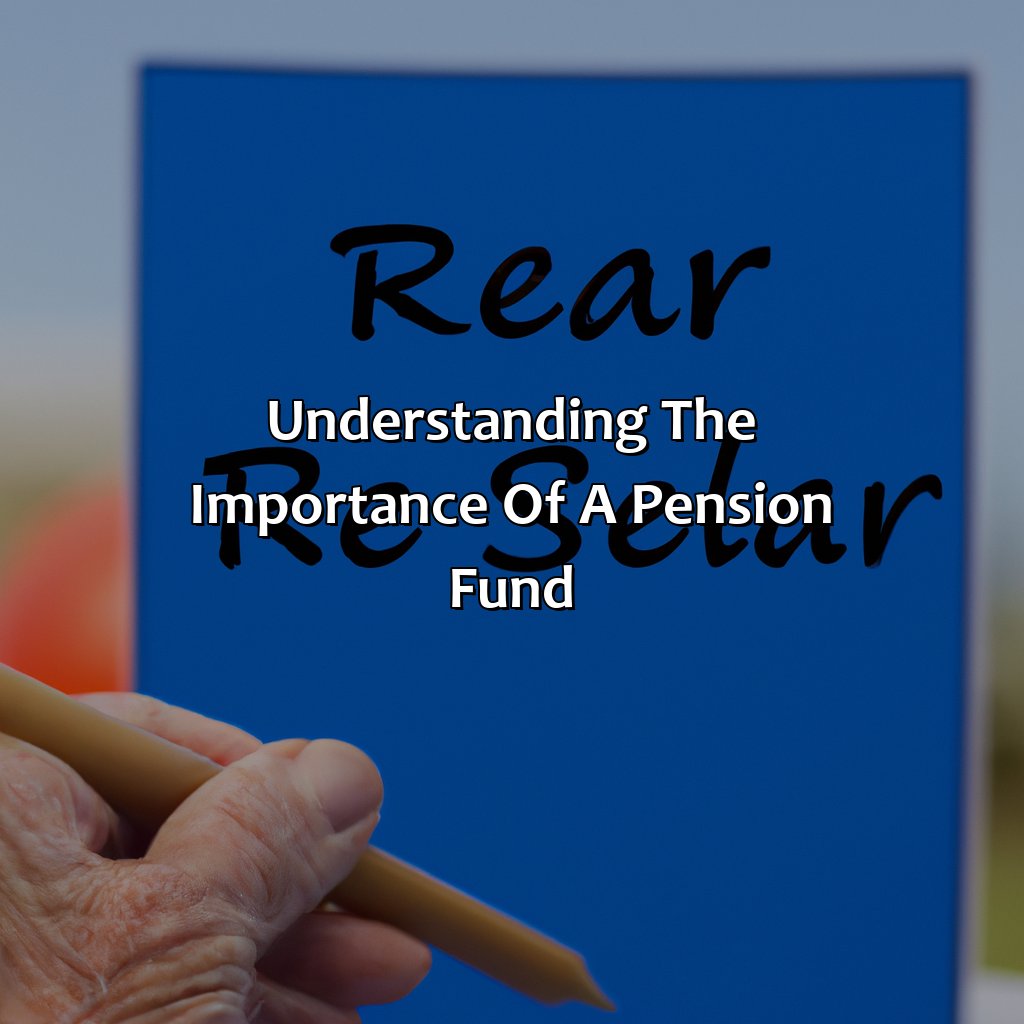
Image credits: retiregenz.com by Yuval Jones
Requirements for Starting a Pension Fund
Start a pension fund? It’s possible! You must know the legal and funding requirements. Let’s review them. Two main points: Legal needs and Funding demands. These need your attention.
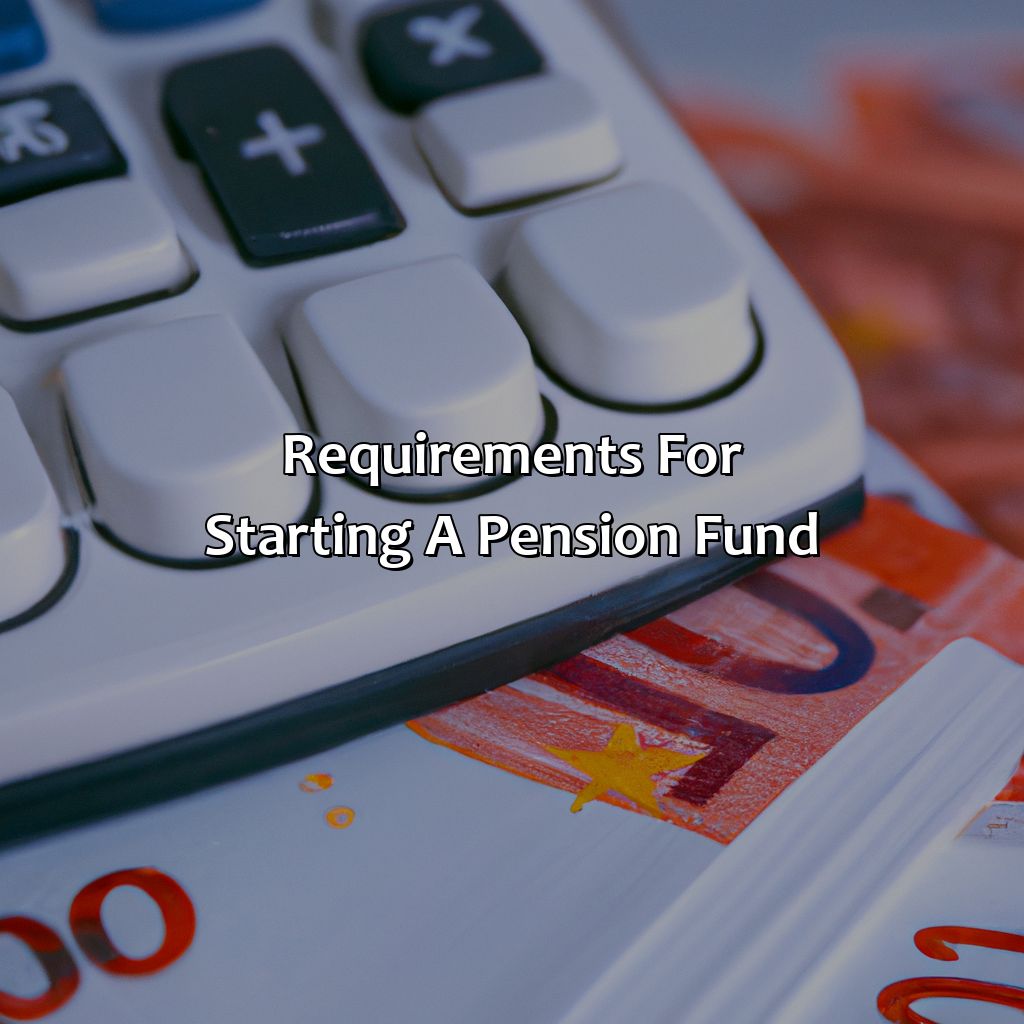
Image credits: retiregenz.com by Adam Jones
Legal Requirements
Starting a pension fund requires meeting specific legal prerequisites, which need to be fulfilled accurately for successful incorporation. Necessary regulations may differ across different countries and jurisdictions. Understanding the obligations typically associated with commencing a pension fund is crucial to avoid any risk of non-compliance.
To start a pension plan, it is essential to have clear knowledge of the applicable laws, including pension and tax legislation. These rules govern the activities of the pension scheme and ensure its proper functioning. Determining the type of pension plan suitable for your employees, such as defined contribution plans or defined benefit plans, is crucial in meeting the legal requirements.
Additionally, Pension providers must comply with standards related to financial reporting when filing reports on their assets and liabilities regularly. The business must ensure that regular audits are conducted by authorized auditing firms, in line with relevant guidelines.
Pro Tip: Seeking guidance from legal experts can be helpful in ensuring compliance with all legal requirements for starting a pension plan.
Starting a pension fund? Just remember, funding requirements are like your ex’s demands – they may seem high, but they’ll pay off in the long run.
Funding Requirements
The initial financial resources required to initiate a pension fund are crucial to its success. These funding necessities can encompass several aspects such as start-up costs, operational expenses, and reserves for satisfying future payouts. Understanding the ideal quantum of funds required and ensuring sufficient backing before initiation is an important aspect.
Furthermore, to fulfill regulatory obligations concerning starting a pension fund, there are specific requirements that need consideration. For instance, registering with the appropriate regulatory body, obtaining licenses and permits, and filing necessary paperwork is essential.
Consequently, there are unique significant considerations while formulating pension fund investments based on diversified market instruments like securities or real estate. These strategic investment approaches should account for factors such as the expected returns on investments along with alternative investment options such as bonds that can provide a stable risk-free return.
Overall, it is important to weigh all options available while effectively managing risks so that adequate retirement benefits can be provided. Starting small or partnering with established firms also offers significant advantages in terms of experience and expertise towards achieving long-term financial goals.
Get ready to crunch some numbers and break some piggy banks, because creating a pension fund is not for the faint of wallet.
Creating the Pension Fund
Creating a pension fund? Consider the type of plan you desire. Then design a plan that meets your criteria. Finally, register the plan. The three steps to success:
- Choose the Type of Plan
- Design the Plan
- Register the Plan

Image credits: retiregenz.com by David Arnold
Choosing the Type of Plan
When planning to create a pension fund, one of the crucial aspects is Choosing the Right Plan. Here are some key points to consider:
- Identify the number of employees who will be covered by the plan.
- Consider your company’s financial resources and decide on a plan that suits your budget.
- Choose between defined benefit plans or defined contribution plans based on your company’s requirements.
- Compare and contrast different types of pension plans such as 401(k) and IRA.
- It is essential to consult with financial advisors or legal experts before making any final decisions regarding the type of pension plan.
Furthermore, choosing the right pension plan is not an easy feat. It requires careful planning and consideration based on the company’s unique circumstances. Therefore, it is crucial to make informed decisions that cater to their needs.
A success story that comes to mind is that of ABC Company, a small business in Chicago. The founders recognized early on that employee retention was critical for their growth; hence they chose a carefully crafted pension plan for their employees. Despite being new in the industry, they attracted top talent due to their attractive pension package. Hence, they were able to retain talented individuals and expand their business over time.
To plan for retirement, design a pension fund like you’re building a fortress: strong, secure and with lots of layers to protect yourself from the impending zombie apocalypse of old age.
Designing the Plan
Creating a Pension Fund is a complex process that requires careful planning and execution. One crucial component of this process is designing the plan, which involves developing a framework for how the fund will operate and benefit its members. To do this, you must first identify your target audience and their needs before creating a bespoke investment strategy that aligns with your organization’s objectives and desired outcomes.
Once you have established your goals, you can then determine the investment vehicles for achieving them, such as mutual funds or ETFs. The next step in designing your plan is assessing risk tolerance levels of members to ensure they are suitable. Having a clear understanding of risk profile allows you to develop an efficient asset allocation and rebalancing strategy that lowers overall risk while maximizing returns.
It s important to consult experts who understand the legal implications of pension regulations and governance requirements. This helps avoid difficulties in managing member expectations especially when providing retirement benefits that are rewarding, relevant and responsive to the long-term security of each individual. Learn how to collect pension early and secure your future.
As far back as 1875, labor unions began advocating for pension plans. The earliest known employer-sponsored system was established by American Express in 1875 and soon set up a trust fund backed by stocks and bonds, learned by research studies on pensions starting from inception till date.
To understand pension plans better, it’s important to know what the UK state pension is and how it works.
Registering the plan is like signing up for insurance – you know it’s important, but it still feels like a chore.
Registering the Plan
Legalizing the Scheme for Pension Fund
To launch a pension fund properly, you need to register your plan with the appropriate department. This process is called pension plan legalization, and it is a legal necessity in many countries around the world.
- Select Qualified Retirement Plan (QRP) or Non-Qualified Plan (NQP).
- Choose Your Plan’s Fiduciary.
- Create a Trust Fund for Your Pension Plan.
- Complete and Submit IRS Form 5300 or Form 5310.
- Get Your Tax Identification Number from SS-4.
- Get Ready for Ongoing Compliance Needs.
It is also vital to remember that there are ongoing compliance rules to adhere to – so you should be up-to-date with these regulations always. If you are wondering when can I get my state pension, research your country’s specific guidelines for eligibility and application process.
After registering your pension plan, thorough funding, administration guidelines, maintenance, and monitoring strategy creation are crucial aspects. Learn how to get a pension and start planning for your retirement today.
One such unique implementation not discussed in Step-by-Step guide above is; using EFAST2 filing system online instead of traditional paper-based methods to save time-consuming filing labor.
Some companies failed at compliance procedures which led to hefty penalty costs that affected their entire business operations and were hard to recover from.
Managing the Pension Fund is like playing a game of chess, except the pieces are people’s retirement money and one wrong move can lead to a checkmate of lawsuits.
Managing and Administering the Pension Fund
Manage your pension fund well by following our guide, “How to Start a Pension Fund.” Make well-informed decisions. Hire professionals. Mitigate risks. Ensure compliance. Provide annual reports and disclosure.
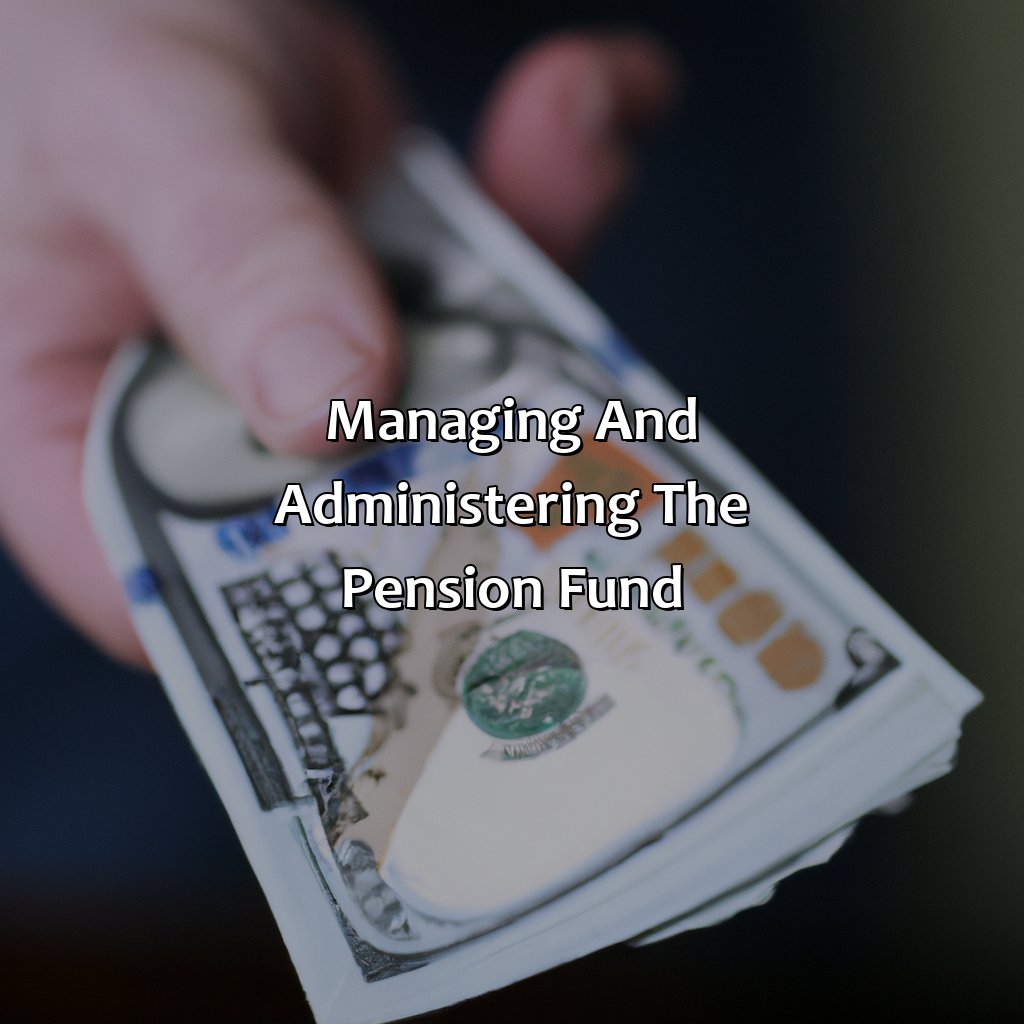
Image credits: retiregenz.com by Yuval Woodhock
Hiring Professionals
The efficient management and administration of a pension fund demand expertise from a multi-disciplinary team comprising seasoned actuaries, investment analysts, retirement benefits consultants, and regulatory compliance specialists. Each professional brings valuable insight and knowledge that fosters an effective fund’s viability in meeting its long-term obligation to beneficiaries.
Actuaries possess the skills necessary for pension fund valuation and risk assessment analysis. They provide data-driven insights on funding levels, expected returns, plan design changes, benefit payment planning, and assessing funding adequacy.
Investment analysts track portfolio performance and make informed recommendations for asset allocation that maximizes investment returns while mitigating risks. Pension benefits consultants advise plan sponsors on benefit design options that align with financial objectives. Regulatory compliance specialists ensure adherence to legal requirements regarding reporting obligations to the government, plan notices distributions to participants, or filing regulations.
In addition to the above experts, other pension advisers may complement your team depending on the priorities of your scheme. For instance, an expert in communication can offer valuable services in simplifying communications with plan members about scheme changes or addressing concerns or complaints from members.
It is essential to select professionals who have a deep understanding of the industry-specific regulations applicable to Pension Fund administration. Finding seasoned professionals with vast experience in dealing with changing market dynamics is key to maintaining strict governance policies around your company’s fiduciary responsibilities over pension assets.
A notable example is the UK’s National Employment Savings Trust (NEST). The organization set out to develop a simplified defined contribution scheme for employers in 2012 but faced complex operational challenges relating to legacy systems’ integration and massive scale migration of accounts into its platform. NEST successfully navigated such hurdles by developing technical competencies internally while outsourcing some non-core competencies like actuarial services. NEST’s operation offers an invaluable lesson on how balanced collaboration between internal competence development versus outsourcing can lead to cost-effective pension fund management through a multidisciplinary approach.
Managing a pension fund is like playing a game of Jenga with people’s future financial stability on the line – one wrong move and the whole thing comes crashing down.
Risks and Compliance
Maintaining legal and regulatory guidelines is vital to ensure the effective management of pension funds. The prevention or mitigation of risks, financial fraud, non-compliance with regulations are among the challenges organizations face.
It is imperative for organizations to maintain sufficient documentation related to pension plans, including plan descriptions, investment policies, trustee meetings minutes, and statements of activity reports. Proper assessment of investment practices and asset allocation strategies can help mitigate investment risks.
In addition to regulatory compliance, maintaining good communication with plan participants is critical in ensuring an effective pension fund management system. Providing regular updates on plan performance and educating participants on their options promotes transparency and empowers employees. If you want to learn more about how to apply for widows pension, check out this guide.
Considering all these factors together can make your great contribution towards a successful Pension Fund Management System. Take a step today! Don’t miss out on securing your future with proper Pension Fund Management. Because nothing says ‘we care about your retirement’ quite like a 50-page annual report full of legal jargon and fine print.
Annual Reporting and Disclosure
Pension Fund’s Annual Report and Disclosure are legally required documents to maintain transparency. These reports contain information about the fund’s financial health, investments, contributions, disbursements, as well as administrative expenses. The disclosure must be made to the plan participants, government agencies, and other stakeholders.
Annual Reporting and Disclosure assures stakeholders about the management of pension funds and acts as a crucial risk management tool for pension funds. This detailed report depicts the current status of the fund’s finances and allows plan sponsors to analyze trends and evaluate investments.
In addition to providing an overview of the plan’s financial health, the report communicates changes in investment policy or asset allocation strategy. Pension funds also use these reports to highlight sustainable investment opportunities they have undertaken throughout the year.
A prominent example of how Annual Reporting and Disclosure has proved useful is Enron’s Pension Scandal in 2001/2002. Distorted reporting led to several employees losing their retirement savings practically overnight due to a lack of accountability. It was later established that Enron misled its investors about its pension scheme’s financial health by fabricating annual reports and misappropriating its employees’ retirement savings. To learn more about the various pension plans available in the US, you can check out this helpful resource on pension plans.
Reviewing the pension fund? It’s like going on a blind date with your finances – a little nerve-wracking but necessary for long-term stability.
Reviewing and Evaluating the Pension Fund
We have pinpointed two sub-sections to review your pension fund. Performance monitoring will make sure your fund is reaching your retirement goals. Modifying the plan could be the way to optimize your retirement savings strategy. Evaluate and assess these two sub-sections for a successful retirement!
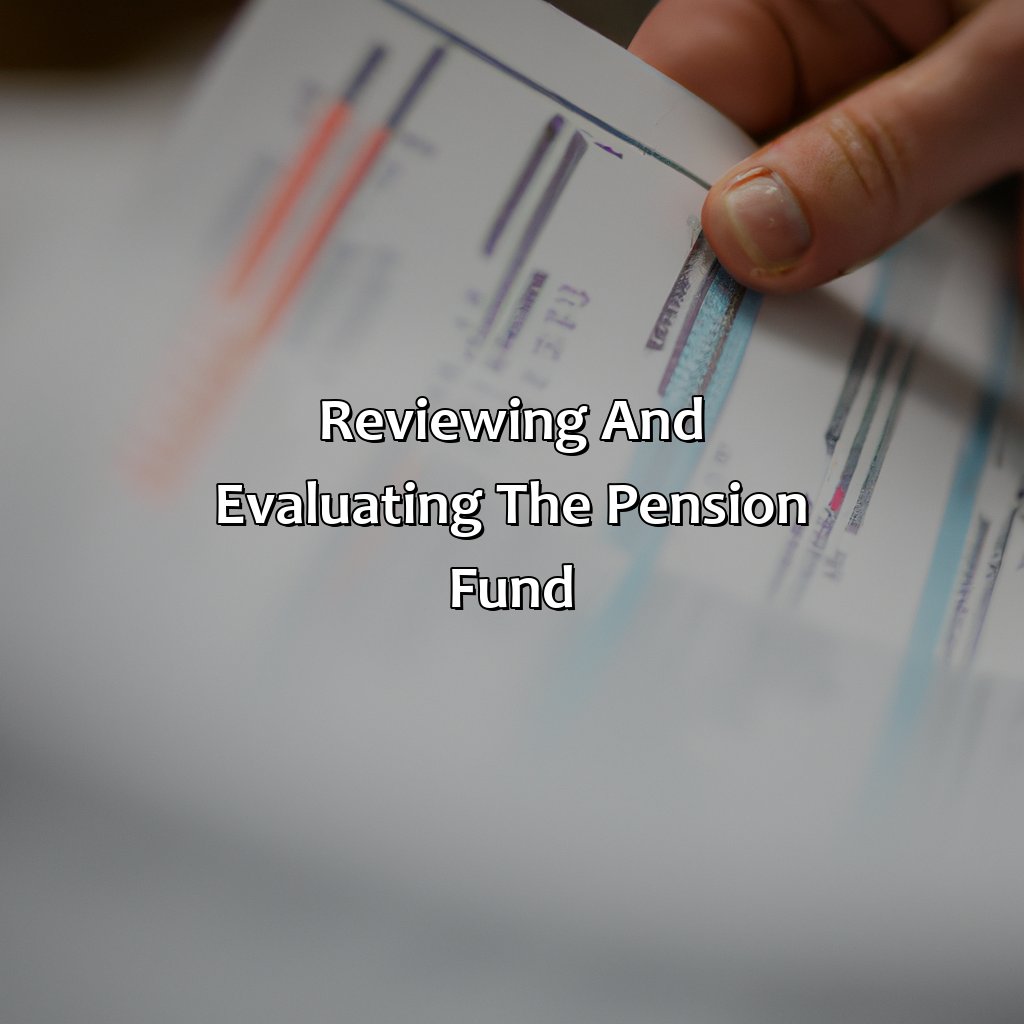
Image credits: retiregenz.com by Adam Woodhock
Monitoring Performance
Tracking Progress in a Pension Fund
It is crucial to keep track of the development and growth of a pension fund. This can be achieved by frequently monitoring the progress of the fund over some time against pre-defined parameters. Tracking progress will allow for adjustments to be made, which will enhance results. If you are wondering how do you find your pension information, you can contact your employer or retirement plan provider for further assistance.
To monitor performance in a pension fund, quantify its portfolio distribution, analyze investment returns and compare them with set targets, evaluate the fees charged, assess customer satisfaction levels and also appraise the level of risk being taken. If you’re curious about what percentage of the stock market is owned by pension funds, check out this informative article.
Maintaining consistency in tracking performance throughout the lifespan of the pension fund is essential in ensuring sustainable future growth. By persistently evaluating operations against pre-determined benchmarks or target measures, investors can easily determine whether they need to make changes to investment strategies.
Understanding how various external forces impact success in pension funds investment requires study over several years. For instance, historical data shows that fluctuations in world markets usually affect stocks differently than bonds. Such information could be leveraged while making long-term decisions on portfolio management.
“Changing the plan is like rearranging deck chairs on the Titanic, but at least you’ll have a pension fund to go down with.”
Modifying the Plan
When considering changes to the established pension plan, there are several critical steps that pension plan administrators can take to ensure a smooth transition. Below are three steps to follow when modifying the plan:
- Identify the goals of the proposed modifications and why they are needed.
- Review and compare potential alternatives for achieving the desired modifications.
- Consult with employees and other stakeholders to obtain feedback on their views about the proposed modifications.
It is essential to keep in mind that changing a pension plan might impact current and future retirees, so careful planning and effective communication are key. Furthermore, pension administrators should always remain transparent throughout the process, providing clear explanations for any changes made.
It’s also worth noting that before initiating any modifications, administrators must ensure they abide by all legal requirements, such as those found in relevant legislation or collective bargaining agreements. By following these steps successfully, administrators can implement necessary changes while maintaining trust among stakeholders.
One suggestion for handling feedback from employees is to hold town hall meetings or consultative sessions where concerns and questions can be addressed face-to-face in an open forum. This creates an atmosphere of transparency and openness which helps ease resistance during the adjustment process. Additionally, providing clear marketing materials or handouts explaining each change will help employees better understand – and accept – the rationale behind it.
Five Facts About Starting a Pension Fund:
- ✅ A pension fund is a retirement plan that requires regular contributions from both employees and employers. (Source: The Balance)
- ✅ Pension funds invest money in assets such as stocks and bonds to generate returns and grow the fund over time. (Source: Investopedia)
- ✅ Pension funds can be offered as defined benefit plans or defined contribution plans. (Source: Forbes)
- ✅ Starting a pension fund requires careful financial planning and consideration of factors such as the number of employees, the retirement age, and the level of contributions required. (Source: Small Business Chronicle)
- ✅ Many countries have regulations and laws governing pension funds to ensure they are properly managed and provide adequate retirement benefits for employees. (Source: World Bank)
FAQs about How To Start A Pension Fund?
What is a pension fund?
A pension fund is a type of investment plan designed to provide retirement income to employees. It is funded by contributions from both employers and employees and is managed by a financial institution.
How do I start a pension fund for my employees?
To start a pension fund for your employees, you should consult with a financial planner or investment professional who can help you determine the best options for your company. You will need to choose a pension plan that meets your company’s needs and budget.
What are the different types of pension funds?
The two most common types of pension funds are defined benefit plans and defined contribution plans. A defined benefit plan guarantees a specific payout to the employee upon retirement, while a defined contribution plan allows employees to contribute a certain percentage of their salary to the plan and invest in a range of investment options.
How much money do I need to start a pension fund?
The amount of money you need to start a pension fund depends on the type of plan you choose and the number of employees you have. Generally, you should be prepared to make regular contributions to the plan, which can add up over time.
What are some benefits of starting a pension fund?
Starting a pension fund can be a great way to attract and retain employees by offering a valuable benefit. It can also help you mitigate your tax liability and give you a competitive edge in the marketplace.
How can I ensure my pension fund is managed properly?
To ensure your pension fund is managed properly, you should work with a reputable financial institution or investment professional who has experience managing pension funds. You should also monitor the performance of your plan on a regular basis and make adjustments as needed to ensure it remains in compliance with regulations and meets the needs of your employees.
